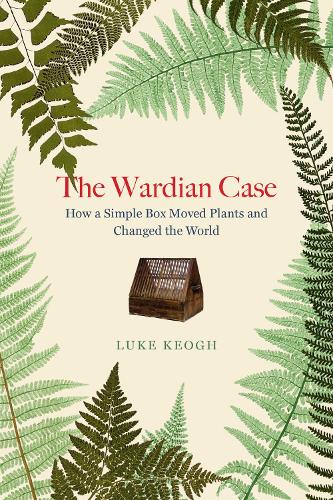
The Wardian Case: How a simple box moved plants and changed the world
(Hardback)
Publishing Details
The Wardian Case: How a simple box moved plants and changed the world
By (Author) Luke Keogh
Royal Botanic Gardens
Kew Publishing
1st October 2020
United Kingdom
Classifications
General
Non Fiction
Popular science
Botany and plant sciences
635.98
Physical Properties
Hardback
288
Width 155mm, Height 230mm
Description
Roses, jasmine, fuchsia, chrysanthemums, and rhododendrons bloom in gardens across the world, and yet many of the most common varieties have root in Asia. How is this global flowering possible
In 1829, surgeon and amateur naturalist Nathaniel Bagshaw Ward placed soil, dried leaves, and the pupa of a sphinx moth into a sealed glass bottle, intending to observe the moth hatch. But when a fern and meadow grass sprouted from the soil, he accidentally discovered that plants enclosed in glass containers could survive for long periods without watering. After four years of experimentation in his London home, Ward created traveling glazed cases that would be able to transport plants around the world. Following a test run from London to Sydney, Ward was proven correct: the Wardian case was born, and the botanical makeup of the world's flora was forever changed. In our technologically advanced and globalised contemporary world, it is easy to forget that not long ago it was extremely difficult to transfer plants from place to place, as they often died from mishandling, cold weather, and ocean salt spray.
In this first book on the Wardian case, Luke Keogh leads us across centuries and seas to show that Ward's invention spurred a revolution in the movement of plants and that many of the repercussions of that revolution are still with us, from new industries to invasive plant species. From the early days of rubber, banana, tea, and cinchona cultivation-the last used in the production of the malaria drug quinine to the collecting of beautiful and exotic flora like orchids in the first great greenhouses at the Royal Botanic Gardens, Kew and the United States Botanical Garden in Washington, DC, the Wardian case transformed the world's plant communities, fuelled the commercial nursery trade and late nineteenth-century imperialism, and forever altered the global environment.
Author Bio
Luke Keogh is a curator and historian interested in the global movement of plants in the nineteenth and early twentieth centuries. Among his many awards and prizes is the Sargent Award from the Arnold Arboretum of Harvard University. Currently he is senior curator at the National Wool Museum in Geelong, Australia, and an honorary research fellow at Deakin University in Melbourne, Australia. In 2020, he is fellow of the 4A Lab, Berlin.
